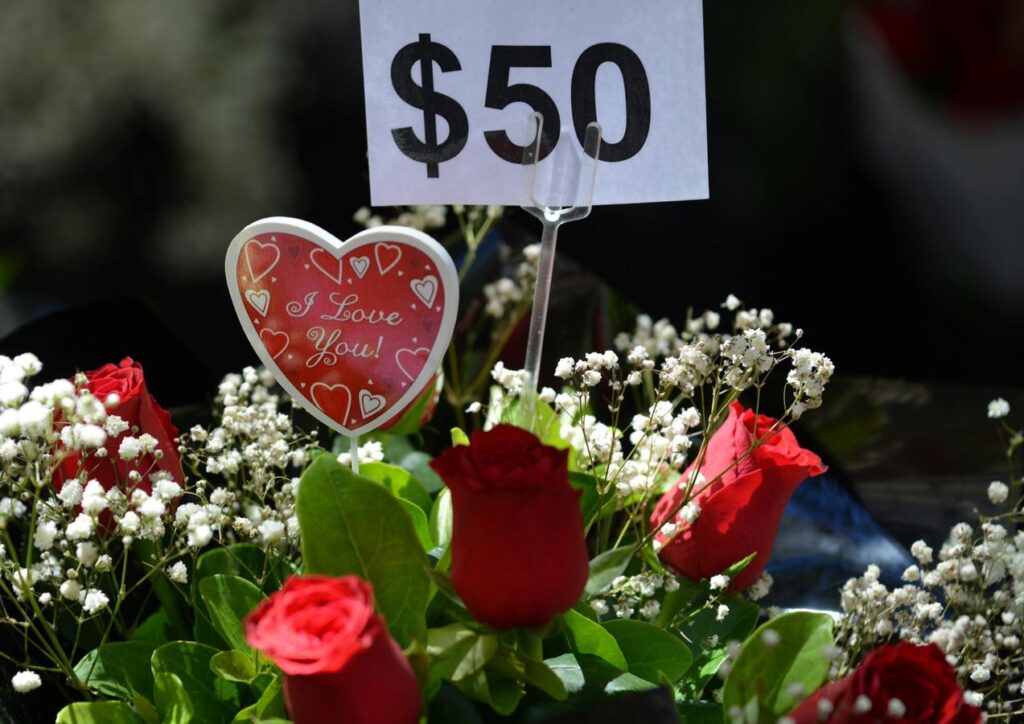Every February 14th, millions of people around the world celebrate Valentine’s Day with grand gestures—lavish dinners, luxury gifts, and overpriced bouquets. It’s a day meant to symbolize love and devotion, yet for many, it ends with a less romantic reality: financial strain.
The commercialized nature of Valentine’s Day has turned it into a multi-billion-dollar industry, with retailers capitalizing on consumer emotions and social expectations. From inflated flower prices to costly prix-fixe restaurant menus, the holiday often forces couples into spending more than they intended, leaving their wallets—and sometimes their relationships—worse off.
According to Capital One shopping, Valentine’s Day spending in the U.S. reached nearly $26 billion in 2023, with the average consumer shelling out over $186 on gifts, meals, and experiences. But where does all that money go, and how much of it is truly worth spending?
1) Overpriced flowers: A Bouquet of Markups
The tradition of gifting flowers, particularly roses, on Valentine’s Day comes at a premium. Wholesale flower prices skyrocket in February due to increased demand and logistical challenges. A dozen red roses that might cost $30 in January can easily climb to $80 or more by February 14th.
Florists, grocery stores, and online retailers all raise their prices, knowing that consumers feel pressured to buy flowers regardless of the cost. And while the gesture is appreciated, the financial impact lingers longer than the bouquet itself, which typically lasts less than a week.
Smart Alternatives:
If flowers are a must, consider buying them a few days before or after Valentine’s Day, when prices drop significantly. Better yet, opt for a more lasting gift like a potted plant, which can be enjoyed for months rather than days.
2) Dining Out: The Premium You Pay For Romance
Dining out on Valentine’s Day is a big mistake. Restaurants capitalize on this day with exclusive prix-fixe menus that often come with a hefty markup. A meal that would typically cost $50 per person can soar to $100 or more, especially when factoring in wine pairings, service fees, and mandatory gratuities.
The allure of a candlelit dinner in a crowded restaurant can quickly fade when faced with overpriced food, rushed service, and the pressure to make the night “perfect.”
Smart Alternative:
Consider celebrating at home with a thoughtfully prepared meal. Many grocery stores offer gourmet meal kits that provide high-end ingredients for a fraction of the cost of dining out. Alternatively, postpone your romantic dinner until after Valentine’s Day, when restaurants return to regular pricing and offer a more relaxed atmosphere.
3) Luxury Gifts: Love At A Cost
Luxury gifts like jewelry, designer bags, and high-end watches often top Valentine’s Day wish lists, but these gifts can leave a lasting impact—not just on relationships, but on bank accounts. Brands know that Valentine’s Day is a prime opportunity to push limited-edition items at premium prices.
A Tiffany bracelet, for example, might cost $500 or more, while the same amount could be invested into a travel experience, a savings fund, or even a more meaningful, personalized gift.
Smart Alternative:
Set a realistic spending limit that aligns with your budget and financial goals. If luxury is still on the list, consider waiting until post-holiday sales, when retailers offer discounts on unsold Valentine’s inventory. Personalized gifts, such as custom artwork, experiences, or heartfelt letters, often hold more sentimental value than expensive jewelry.
To celebrate without the financial hangover, avoid the post-Valentine’s Day regret that comes from overspending, consider these smart strategies:
- Set a Budget: Agree on a spending limit with your partner to keep expenses in check.
- Think Outside the Box: Plan a DIY spa night, scenic hike, or a home-cooked meal instead of splurging on traditional gifts and experiences.
- Celebrate Late: By waiting just a few days, you can take advantage of discounts on flowers, chocolates, and gifts.
- Prioritize Experiences Over Material Gifts: Studies show that shared experiences create stronger memories than physical items, making them a worthwhile investment.
Valentine’s Day should be about celebrating love, not accumulating debt. So, before you swipe your credit card on an overpriced dinner or a fleeting bouquet, ask yourself: Is this purchase truly meaningful, or just a product of societal pressure?
By being mindful of the hidden costs and opting for budget-friendly alternatives, couples can enjoy the holiday without financial regret. The best expressions of love don’t come with a price tag—they come with thoughtfulness, effort, and genuine connection.
Read the full article here
















